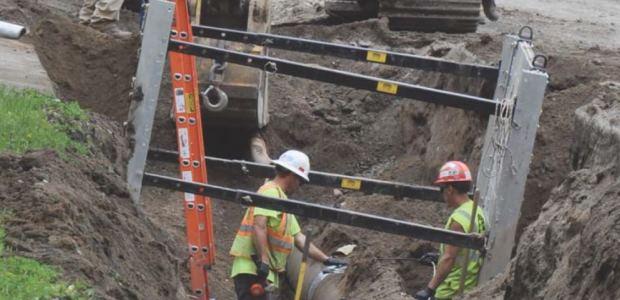
Minnesota OSHA Sets First-Ever Excavation Safety Stand-Down
The statewide stand-down is taking place April 17-21. Since 2015, three workers in the state have died in trench collapses, according to an agency fact sheet.
Minnesota OSHA (MNOSHA), for the first time ever, will promote and participate in a statewide excavation safety stand-down April 17-21. MNOSHA, part of the state Department of Labor & Industry, is working with safety professionals in the state on it.
The stand-down's goal is to raise awareness among employers and workers about preventing excavation accidents, which have resulted in three Minnesota workers’ deaths since 2015 in trench collapses.
During the stand-down, construction employers and workers are asked to pause their work day to talk about excavation safety and discuss topics such as how to properly slope, shore, or shield workers to protect them from hazards during excavation projects. The agency is encouraging employers to make plans to protect workers and prevent accidents and says the stand-down is part of its ongoing emphasis on excavation and trench safety.
After they participate in the stand-down event, employers can submit a photo of the event to MNOSHA by emailing it to [email protected], along with the number of employees involved, and will receive a personalized certificate of participation from Minnesota OSHA.
Cave-ins are much more likely than other excavation-related accidents to result in worker fatalities, according to the agency, which points out that Minnesota law requires employers to provide a workplace free of recognized hazards that may cause serious injury or death, and the trenching and excavation requirements are found in 29 CFR 1926.651 and 1926.652.
General trenching and excavation rules include these:
- Keep heavy equipment away from trench edges.
- Identify other sources that might affect trench stability.
- Keep excavated soil (spoils) and other materials at least 2 feet from trench edges.
- Know where underground utilities are located before digging.
- Test for atmospheric hazards, such as low oxygen, hazardous fumes and toxic gases when greater than 4 feet deep.
- Inspect trenches at the start of each shift and following a rainstorm or other water intrusion.
- Do not work underneath suspended or raised loads and materials.
- Inspect trenches after any occurrence that could have changed conditions in the trench.
- Ensure personnel wear high-visibility or other suitable clothing when exposed to vehicular traffic or mobile earth-moving equipment.